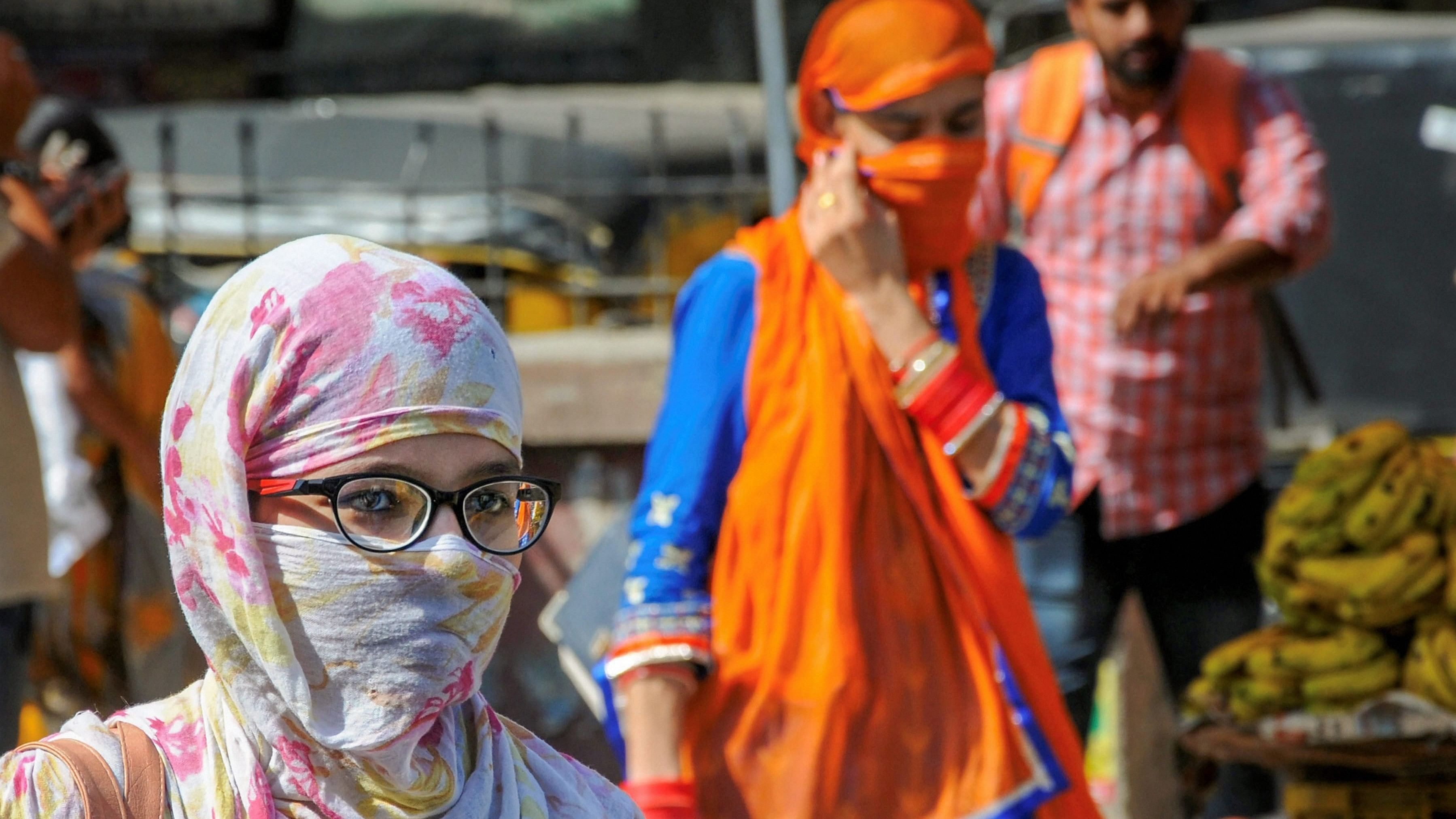
Representative image showing people shielding themselves against direct heat.
Credit: PTI Photo
New Delhi: The unrelenting heat turned daily activities into an arduous task in large parts of India on Sunday, with Najafgarh in southwest Delhi reaching a sweltering 47.8 degrees Celsius -- the highest in the country so far this season.
The crippling heat strained low-income households, which often have poor access to water and cooling, and tested the endurance of outdoor workers toiling in the searing sun, forcing them to take frequent breaks.
The India Meteorological Department (IMD) reported a severe heat wave in parts of Haryana, Chandigarh, Delhi, Uttar Pradesh, Bihar, Gujarat and Madhya Pradesh.
Even the hill stations in Himachal Pradesh, safe havens for people escaping the punishing heat in the plains, reeled from the scorching conditions.
Maximum temperatures reached 36 degrees Celsius in Dharamshala, 44.4 degrees in Una, 42.4 degrees in Bilaspur, 36.6 degrees in Solan and 40 degrees in Kangra.
The Met office has issued a red warning for Delhi, Chandigarh, Haryana, Punjab and Rajasthan, stressing the need for 'extreme care for vulnerable people'. An orange alert was issued for Uttar Pradesh, Bihar and Gujarat, emphasising 'high health concern' for vulnerable people, including infants, the elderly, and those with chronic diseases.
The mercury reached or surpassed 47 degrees Celsius in at least eight places across India, with Najafgarh logging a searing 47.8 degrees, making it the warmest place in the country for the second time in the last three days.
In the national capital, Pitampura recorded 47 degrees Celsius and Mungeshpur 47.7 degrees, at least seven notches above the usual temperature for these areas at this time of the year.
According to a new analysis of airport site weather data, Delhi reached or surpassed 40 degrees Celsius on 1,557 days (around 43 per cent) in the last 10 years.
The densely packed city recorded temperatures above 40 degrees Celsius on 1,254 days (around 34 per cent) during 2004-2013 and 1,180 days (around 32 per cent) during 1994-2003, according to the International Institute for Environment and Development (IIED).
The mercury soared to 46.7 degrees Celsius in Rajasthan's Ganganagar, 47.5 degrees in Madhya Pradesh's Datia, 47 degrees in Sirsa and 47.2 degrees in Nuh of Haryana, 46.4 degrees in Punjab's Bathinda, 47.7 degrees in Agra and 47.2 degrees in Jhansi in Uttar Pradesh.
High heat and humidity also troubled residents in coastal areas of Gujarat.
Anna Walnycki, a principal researcher on IIED's human settlements team, said the alarming rise in extreme heat events in India due to climate change is significantly impacting the health, wellbeing and productivity of everyone, especially those living in low-income and informal communities.
"Low-income households have limited capacity to adapt to extreme heat because of poor access to water and electricity. In addition, the design and construction of informal houses often mean there is poor ventilation and little shelter from extreme heat," she said.
Chandni Singh, senior researcher at the Indian Institute for Human Settlements and IPCC lead author, said state and city-level heat action plans are proving 'insufficient to deal with the heat we are now experiencing.'
In urban areas, Singh noted, the experience of heat depends on factors such as residential location, occupation, and access to cooling.